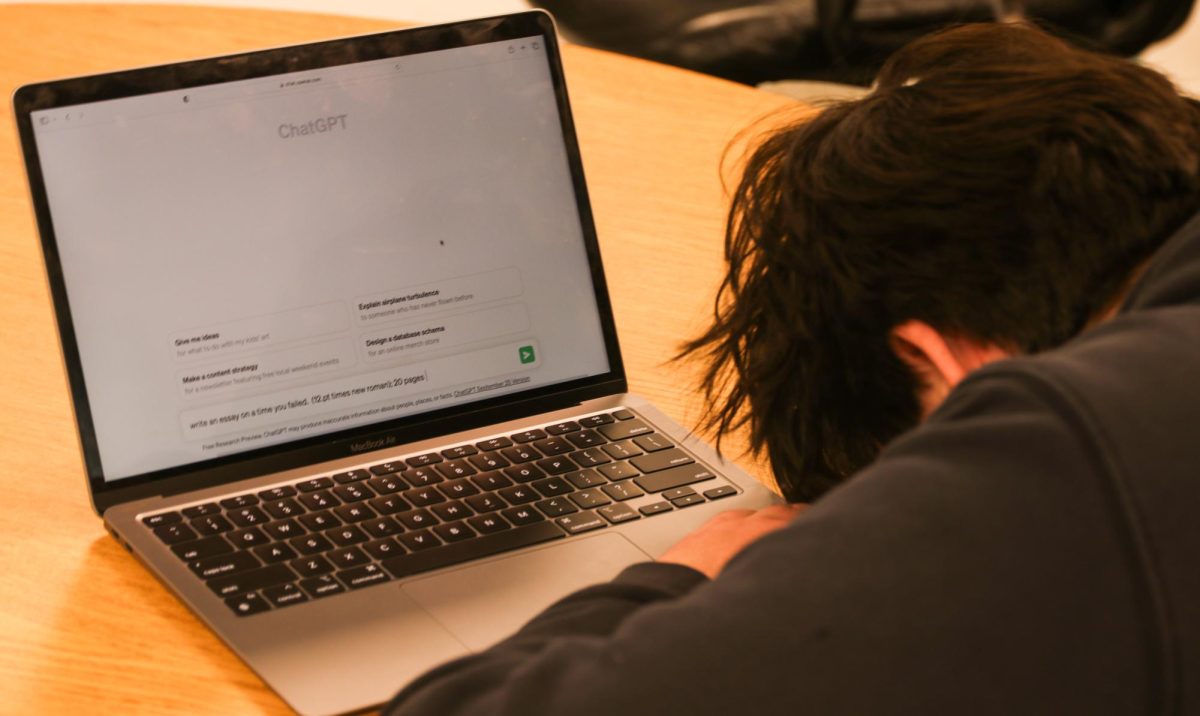Artificial Intelligence (AI) has grown in both availability and popularity. There have been cases of AI being used with negative and positive connotations throughout the country.
In a nationwide survey by Junior Achievement USA, 44% of teens said they were likely to use AI to do their school work for them. In a survey of over 30 Hebron students, 27 students said they have used AI for school and 50% have used AI to do an assignment for them.
“I learned about AI a little over a year ago from a text message from an administrator friend,” English teacher Donna Friend said. “I’ve had some students turn in some stuff done by AI. Sometimes, it was something easy, where I asked them to write a poem. I got vocabulary [that] students had never said out loud, much less written before. It was pretty obvious.”
As head of the English department, Friend has seen numerous occurrences of students using AI in work. However, the use of AI is not limited to English assignments. Both AP world history teachers, Jeremy Millhouse and Morgan Knowles, also said that they have seen AI being used in some of their classes.
“Starting last year, I ran into a few students in my on-level classes who were using AI to answer some of their questions,” Millhouse said. “It’s not widespread, but there are a few instances.”
Positives of AI in academics
All three teachers said AI doesn’t have to be used negatively; instead, they said it can be a positive tool that can help students learn.
“With AP world history, there are so many different things that aren’t well explained in our textbook,” Knowles said. “So, I’ve used ChatGPT to write a quick summary or a quick description, [and then] checked it to make sure it’s accurate. There are constructive uses that I think AI has a place for in school. I think the key piece is that AI has to be used for constructive purposes, as opposed to cutting corners.”
Knowles said he has seen examples of AI being used constructively to help students, as he found a program called Classroom Companion that helps AP students with their writing. Friend also said she has seen instances of AI being used to benefit students’ learning; her ACDEC students used AI in order to help them study and do citations. Friend also said she and other teachers have utilized AI to help them make multiple-choice questions.
“There’s some things you can do that it’s super useful for,” Friend said. “Say, I need a new question for a multiple choice style question and I’m out of ideas — I ask [AI] for more. The AI says: ‘Here’s the one I made, make some more like it.’ It can do that, and it can save time.”
Students such as junior Arjun Iyer have said they used AI as a tool to help them. Some instances of student use of AI are using it in AP classes as a means to study and prepare for AP tests.
“I’ve used AI to give me summaries of my notes,” Iyer said. “I’ve also used it to study for AP History tests, and I’ve been using it to summarize and help me make study material.”
Negatives of AI in academics
Assistant principal Vanessa Zavar said there may be confusion among students regarding the acceptable use of AI.
“Sometimes, the students may knowingly utilize too much information [from AI] but, other times, students aren’t quite sure what the difference is between academic dishonesty and trying to get help,” Zavar said.
Teachers such as Friend and Knowles said that AI is a tool that can be utilized for both good and bad; the key is that using AI as a tool helps a student better their learning experience. Whereas, negative use of AI in school poses risks of students not learning at all or becoming a crutch for students.
“It becomes a crutch,” Friend said. “Teachers are here to get students to think for themselves and to grow their skills, especially in English. It’s reading, writing and communicating — you’re going to communicate for the rest of your life. You don’t want a machine to do that for you.”
Using AI in an academically dishonest manner is not the only concern for staff and the district. The issues regarding the security of using AI in school are also a point of concern.
“There are a lot of things that have to be considered, specifically Terms of Service,” Zavar said. “You have to be 13 years old or older to use ChatGPT; however, some of the other AIs that people might want to use are 18. It’s not something that the district has tried, and it might be damaging to our protection and our security as a district. ”
As AI becomes more and more available to the public, AI is expected to see a 37.3% annual increase from 2023 to 2030. School districts across the nation in the future will be faced with the decision and task of either incorporating or excluding AI.
“It’s important, as educators, that we educate students on bias, limitation and accuracy, which are the three biggest problems that can be found in AI,” Zavar said. “As technology changes, we have to change how we approach technology, how we utilize technology, and how we teach students to utilize technology, as [either] a tool or resource.”





